- Home
- Chuck Palahniuk
Rant: An Oral Biography of Buster Casey Page 18
Rant: An Oral Biography of Buster Casey Read online
Page 18
From DRVR Radio Graphic Traffic: The police chase of the Christmas-tree car is headed up the East Side ramps to the Barlow Avenue Viaduct.
From the Field Notes of Green Taylor Simms: Common to almost all spiritual beliefs is the idea of Limnal Time. To ascetics, it can be the moment of greatest suffering. To Catholics, it’s the moment the Communion wafer is presented to the congregation. The moment is different for each religion or spiritual practice, but Liminal Time itself represents a moment in which time stops passing. The actual definition is a moment “outside of time.”
That moment becomes the eternity of Heaven or Hell, and achieving even an instant of Liminal Time is the goal of most religious rituals. In that moment, one is completely present and awake and aware—of all creation. In Liminal Time, time stops. A person is beyond time.
Being involved in an automobile accident has brought me closer to that enlightenment than any religious ritual or ceremony in which I’ve ever participated.
From DRVR Radio Graphic Traffic: Our latest word is that the Christmas tree atop the escaping Cadillac has burst into flames, becoming a speeding, blazing bonfire, plowing along, leaving a trail of blue smoke and sparks.
The police have closed the west end of the Barlow Avenue Viaduct. A police roadblock is in place.
Shot Dunyun: It’s beyond typical, but every tag I’ve been involved in, time slowed. Slow as stroboscopic photography, where you see the bullet creep through the air, pressing the side of the apple, tunneling inside, gone a second, then bulging out the far side, splitting the apple’s skin, and coming out.
From DRVR Radio Graphic Traffic: Here in the newsroom, we’ve confirmed a telephone call from the driver of the burning Cadillac, and producers are patching the driver through. Do we have the line patched? Do we still have reception?
Echo Lawrence: It’s funny, what you remember about a person.
From DRVR Radio Graphic Traffic: With its blue Christmas tree still shining, the still-blazing Cadillac has flipped, police report, and is now sliding toward the north edge of the Barlow Avenue Viaduct at its highest point above the river. If we’re lucky, the next voice you hear should be that of the unidentified driver…
Echo Lawrence: But anytime Rant had an orgasm, or the moment after we’d been rammed by another team, right when he blinked his eyes and seemed to realize he wasn’t dead, he’d smile and say the same thing. At that moment, Rant would always smile, all dopey, and say, “This is what church should feel like…”
Rant Casey on DRVR Radio Graphic Traffic: “…I love you, Echo Lawrence, but I got to try and save my mom.”
Shot Dunyun: Off the record, but, weeks ahead of that night, I’d been dosing Echo’s root beer with that Plan B, morning-after abortion pill. Just in case. I can’t say how many little Rant Caseys I made her poop out.
Rant Casey on DRVR Radio Graphic Traffic: “…What if reality is nothing but some disease?”
28–Embedded Commands
Wallace Boyer ( Car Salesman): Remember, car buyers will fall into one of the three learning styles: visual, auditory, or kinetic.
Talk to Echo Lawrence, for example, and her eyes are rolled up, looking at the ceiling. Every other sentence out of her mouth is “The way I see it…” or “Watch out for that bitch Tina Something…” To pace Echo, you only have to look up when you think. Do it subtly, but bunch up the fingers on your left hand to mimic hers. Speed up until your breathing is forty, maybe fifty breaths per minute. Blink your eyes at least thirty blinks every minute.
Always remember: The person asking the questions is the person in control. The way to get that huge, impossible yes is to pile up a mountain of small, easy yeses. A good salesman starts by asking what’re called tie-down and add-on questions; these are questions such as “Do you want to make your wife happy?” or “Is your child’s safety important to you?” Ask questions people have to answer with a surefire “yes.” Ask: “Is gas mileage important to you?” and “Do you want a reliable car?” Just keep piling up those small yeses.
The more any customer says yes, the more “pliable” they become.
Another kind of questions are called “control questions,” such as: “Do you like light colors or dark colors?” Or “Are you looking for a car or truck?” Control questions include the only answers the customer can give. You’re limiting the answers to the options you give. Two-door or four-door? Convertible or hardtop? Do you want leather or cloth seats?
And when a person says, “Hold on,” or “Listen up,” that’s called an “embedded command.” To sell cars, you use embedded commands all day long. For example:
“Would you just look at the two-tone paint job on that beauty?”
“Treat yourself. Just feel that leather upholstery.”
“Wow, would you listen to that stereo!”
If you pay attention to Echo Lawrence, half of what comes out of her mouth is embedded commands.
Control questions, tie-down questions, and embedded commands—that’s how a good salesman coaxes you to open up. You pace Shot Dunyun by wiping your lips with the back of your hand while you talk. Cross your arms over your chest and flop your head from one shoulder to the other. Say “What I heard is…” and “Word on the street says…” Convince Shot you’re an auditory learner. Listen for him to introduce “doors”: those little glimpses into his personal life. His dog, for example. His pug dog. And remember, he’ll look side to side as he thinks about how his dog died.
But if Shot Dunyun looks at his right ear—he’s lying.
For now, remember: Echo Lawrence is visual. Shot Dunyun is auditory. Neddy Nelson is kinetic.
In that last sentence, the word “remember” is an embedded command.
To repeat, the way you get to the huge, impossible yes is, you start collecting a lot of easy, small yeses.
29–Werewolves III
Neddy Nelson ( Party Crasher): Did I ever tell you about the longest day of my life? The day I almost died?
Jayne Merris ( Musician): If you ask me, at first it was hilarious. Droolers, my friends called them; anybody with end-stage rabies couldn’t give a damn about curfew. Droolers weren’t even aware they had rabies. Most infected people just felt a little more pissed off every day. Always edgy or grouchy. They’d take anger-management courses and serotonin reuptake inhibitors. They did meditation at Zen retreats, or cognitive talk therapy, to deal with their growing anger. Junk like deep breathing and creative visualization. All this junk, until, one day, they woke up not just on the wrong side of the bed but actually twitching, their throat spasming, maybe their legs partially paralyzed—a Drooler. Next thing, you’d see them staggering down the street, on the traffic cameras, violating the eight o’clock morning curfew.
Phoebe Truffeau, Ph.D. ( Epidemiologist): A historical precedent had existed. In 1763, during the British war against the French for territory in North America, the vast population of Native Americans sided largely with the French. In a gesture of seeming good will, the British provided the aboriginals with blankets that had been used in hospitals treating smallpox victims. With no natural resistance to the Variola major virus, countless Native Americans died.
Galton Nye ( City Councilman): The rabies epidemic was tragic. It continues to be a human tragedy of staggering proportions. My heart really does go out, but you have to understand the need to contain the disease to the night segment of the population. The so-called Nighttimers. Making a limited tragedy into everybody’s problem wasn’t the answer.
But, please, intentional genocide this was not.
Neddy Nelson: Are you sure I didn’t tell you already? How one game window, right at the tail end of the window, not more than an hour before the morning curfew, some Shark slammed my right rear wheel? You ever been slammed so hard your axle spindle is toast? You know how many hundred foot-pounds of torque it takes just to strip the threads on a hardened-steel spindle? Are you surprised that kind of slam would bounce my head off the steering wheel and black me out for a couple hou
rs?
Galton Nye: We used to hear stories, how radical Nighttimers were plotting to spread the infection across the time-line. Out of frustration, these same political radicals accused Daytimers of engineering the epidemic in order to cripple the Nighttimer birthrate and their so-called inevitable rise to a voting majority.
Jayne Merris: On the traffic cameras, the Droolers used to limp around, dragging one leg, slack-jawed, snarling. People who used to be wives, fathers, and even little kids, now—completely gone berserk, lurking in public toilets and department-store fitting rooms with one goal: to sink their spitty teeth into somebody.
Neddy Nelson: You know the only Sharks who tagged that hard? The only players that brand of stupid? You know what a Drooler is? Can you picture somebody with end-stage rabies, all that bottomless rage, can you believe they’d still be driving and Party Crashing? Now can you get the mess that Party Crashing was turning into?
Phoebe Truffeau, Ph.D.: In 1932, a government study identified approximately four hundred African American men infected with syphilis. Rather than treat the disease, the study officials allowed it to progress for forty years, in order to track subsequent infection patterns and autopsy the men as they eventually died. Known as the “Tuskegee Experiment,” this U.S. Public Health Services study ended in 1972, only when a whistle blower leaked insider information to the Washington Evening Star newspaper.
Galton Nye: We had to be careful. All the early outbreak clusters had to be confined to the nighttime, and any daytime infection was traced to direct interaction with a Nighttimer. Because so many of these encounters were of a so-called covert nature, mostly involving illegal drugs and sexual contact, the infected Daytimers were slow to recognize and report their symptoms.
Jayne Merris: Before the Droolers, it used to take a minute, tops, to turn over the city at curfew. The curfew sirens blasted—first the ten-minute warning, then the one-minute warning. The curfew bell used to ring, and anybody still on the street, the traffic cameras snapped their picture or their license plate, and the state matching program sent them a hefty bill for the fine. Five hundred or a thousand bucks, depending on your trespass record.
The Droolers turned up, and next thing, the police stretched the old curfew minute to ten minutes, to do walking searches and make sure no Droolers were lurking behind newsstands or parked cars. After a Drooler hid in some bushes and jumped a mess of fourth-graders in the daylight, the curfew minute expanded to a full hour. If you ask me, that’s way too long.
Neddy Nelson: You ever wake up with a bloody forehead and your steering wheel collapsed from the impact? You ever wake up to the morning-curfew sirens with blood gluing your eyes shut? Your car toasted? The seat belt almost cutting you in half? You ever get your eyes open just in time to see some trigger-happy curfew squad making the sweep down the street where you’re trapped? A posse of spooked vigilantes searching to flush out any bleary-eyed, dazed Nighttimer like you to shoot?
Galton Nye: They became the biological equivalent of suicide bombers, those maniac so-called hydrophobes staggering around at the morning-curfew change.
Jayne Merris: A Drooler could manage the nights. No sunlight. But when the morning sirens blasted, they didn’t know anymore to come inside, and if the curfew squads caught somebody hiding or running away, they’d assume the worst and just shoot the person dead.
If you ask me, by then nothing short of a bullet was going to cure a Drooler.
Phoebe Truffeau, Ph.D.: In 1940, four hundred men, prisoners from the Chicago metropolitan area, were covertly infected with malaria in order for public-health officials to test new types of treatments for the disease.
Neddy Nelson: You know how much the daylight sucks? You ever climb from the front into the backseat of a totaled car as a gang of gun-toting hired killers marches your way? You ever hide under the shit in your own backseat, the elastic seat-cover and dirty laundry and fast-food trash, counting your heartbeats to keep from bolting, freaked out, and running down the street in a hail of gunfire?
What’s the longest you ever counted your heartbeat? You ever counted heartbeats up to ten thousand? Twenty thousand? How about 41,234?
Galton Nye: My heart goes out, but we had our children to consider. Our own families. Citizens have a personal responsibility to conduct their lives in a way where they minimize their own exposure to dangerous disease. The decent, productive members of any society have a responsibility to protect the next generation.
Our children truly are the future.
Phoebe Truffeau, Ph.D.: Beginning in 1963, officials at the Willowbrook State School, a residence for developmentally disabled children in Staten Island, New York, intentionally infected healthy children with hepatitis in order to test the effects of gamma globulin on the disease. For three years, school officials repeatedly injected the children with viral agents, until public outcry stopped the program in 1966.
Neddy Nelson: Do you know how hot it gets in a parked car with all the windows rolled up on a sunny day? Buried under trash? Hearing a city of people walk past? Knowing how you’d look, a born Nighttimer, never been in the sun more than a total of six hours in your life, how you’d look, your face smeared with blood and sweat, your eyes swoll up and bruised, crawling out of a wrecked car? How fast do you think they’d shoot you dead?
Galton Nye: My heart goes out. I’m not saying anybody deserves to go insane and be gunned down by the curfew police, but please consider how Nighttimers live. The rest of us, who live our lives according to the word of God and common sense, we should not have to foot the bill for their sins.
A person only has to look at how Nighttimers behave. They expect life to be just one big party. Their lives revolve around sex. Crashing their cars, and meaningless one-day stands with strangers. Our minister devoted one entire sermon to describing their lifestyle. It gets hard to feel sympathy for people so reckless with their own health. These so-called victims are people who don’t respect themselves. Or respect God.
If they want to thin their own ranks, I say let them.
Phoebe Truffeau, Ph.D.: In the mid-1960s, the American anthropologist James Neel inoculated members of the Yanomami tribe in Venezuela with a virulent strain of measles. Neel and his team of researchers refused to treat the sick; instead, they documented how the disease spread, killings thousands, in order to test a controversial theory of eugenics.
Neddy Nelson: You have any idea how bright the sun looks if you’ve been raised at night? Have you spent a hundred-something-thousand heartbeats wondering if you’re not already dying of rabies? Maybe you haven’t boosted in weeks, because you’re afraid you won’t be able to?
You ever see friends you recognize get machine-gunned by police on real-time traffic cams?
You ever found yourself trapped in a world where you’re everybody’s worst nightmare?
Jayne Merris: If you ask me, the first sign was finding public bathrooms locked at night. Pretty soon, a lot of public drinking fountains stopped running except in the daytime. Daytimers staked out the bathrooms and restaurants and drinking fountains they wanted, and Nighttimers had to settle for the rest. The segregation only got worse as the rabies epidemic spread.
The twelve hours we spent on the backside of the planet, if you ask me, the night turned into just another kind of ghetto.
Neddy Nelson: Do you have any idea how sweet the sunset looks after you’ve been sweating and bleeding, pissing yourself, in the backseat of a wrecked car all day? Can you imagine how sweet those sirens sound at evening curfew?
Galton Nye: We used to hear stories in Bible-study group, how these so-called Droolers would try to spit in your mouth. The way Nighttimers carry on, they only protest so loud so their spit flies in your eyes or into your food. I’m talking about intentional high-risk conduct.
My heart goes out, but I say, sooner or later, the quarantine had to start.
30–In Mourning
Lynn Coffey ( Journalist): On the first day after Rant Casey died—an apparent suicid
e witnessed by thousands of people, millions if you count the television rebroadcast of his car exploding—on the very next day, a curfew officer named Daniel Hammish, age forty-seven, a nineteen-year veteran of curfew patrol, was making his evening sweep when he assaulted a passerby. Hammish bit this stranger, with his teeth, in an unprovoked attack, on the exposed skin of her neck. Responding emergency medical technicians found Hammish delirious and seemingly hallucinating, before he lost consciousness and subsequently died.
Todd Rutz ( Coin Dealer): The police come into my store, show me a mug shot of the kid who’s been selling me his coins, that’s the first I know the kid’s name is Buster Casey. They tell me he’s died in some car wreck, was on the news. Ask, what did I know about the kid, this Casey kid? They ask stuff like, did he ever exhibit violent tendencies? Did the kid ever kiss me? Or bite?
Crazy questions.
Lynn Coffey: In my opinion, there was something a little stagy about Casey’s death. First, he was careful to drive the largest, brightest car that night, literally heaping that car with lights, drenching it with gasoline, and driving zigzag through the playing field to attract as many taggers as possible. Plus, the television newscopters and the way he called the radio station and kept talking until he’d burned. Even the way Casey ran that red traffic light, smack dab in front of some cops, seems calculated to give him a full lights-and-sirens escort to his next life.

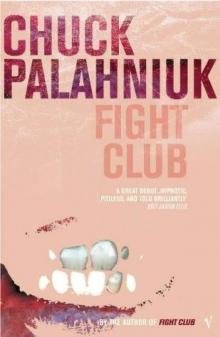 Fight Club
Fight Club Damned
Damned Tell-All
Tell-All Choke
Choke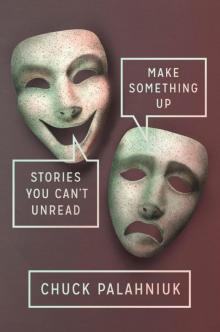 Make Something Up: Stories You Can't Unread
Make Something Up: Stories You Can't Unread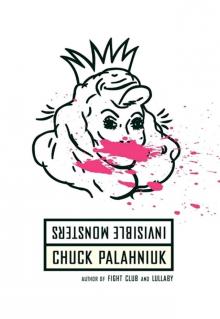 Invisible Monsters
Invisible Monsters Phoenix
Phoenix Beautiful You: A Novel
Beautiful You: A Novel Haunted
Haunted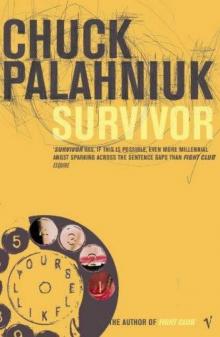 Survivor
Survivor Adjustment Day
Adjustment Day Pygmy
Pygmy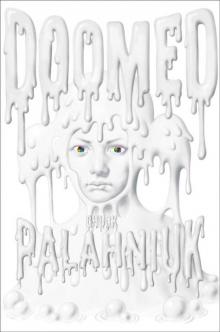 Doomed
Doomed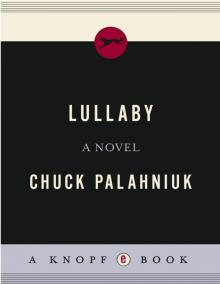 Lullaby
Lullaby Snuff
Snuff Burnt Tongues
Burnt Tongues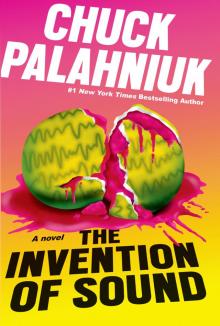 The Invention of Sound
The Invention of Sound Stranger Than Fiction (True Stories)
Stranger Than Fiction (True Stories) Rant: The Oral History of Buster Casey
Rant: The Oral History of Buster Casey Make Something Up
Make Something Up Rant: An Oral Biography of Buster Casey
Rant: An Oral Biography of Buster Casey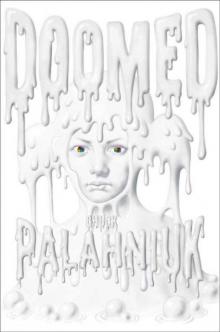 Doomed d-2
Doomed d-2 HOPE AND GORY
HOPE AND GORY Invisible Monsters Remix
Invisible Monsters Remix Beautiful You
Beautiful You Fugatives & Refugees
Fugatives & Refugees